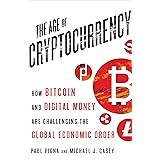In a recent discussion accompanying the video above, prominent industry figure Charles Hoskinson offered a bold prediction: Bitcoin is poised to exceed $250,000 by the close of this year or early next year. This assertive forecast directly challenges notions of an impending “crypto winter,” instead outlining a powerful confluence of macroeconomic shifts and legislative clarity set to reignite the digital asset market.
Hoskinson’s perspective delves into several critical factors expected to drive this significant surge. These include a re-evaluation of global trade policies, a stabilization of international markets, anticipated interest rate adjustments by the Federal Reserve, and pivotal advancements in cryptocurrency regulation. Understanding these intertwined elements is key to comprehending the potential trajectory of Bitcoin and the broader digital asset ecosystem.
Dispelling the Myth of a Prolonged Crypto Winter
The concept of a “crypto winter” evokes images of protracted bear markets and widespread investment apprehension. However, Hoskinson unequivocally dismisses this possibility, suggesting current market conditions are merely a temporary stall. This viewpoint indicates that underlying fundamentals and impending catalysts are strong enough to avert a deep, sustained downturn.
Instead of a freeze, the market is described as preparing for a significant thaw, a period of renewed growth. This perspective often contrasts with more cautious analyses, highlighting a strong belief in the resilience and inherent value proposition of Bitcoin as a leading digital asset.
Geopolitical Shifts and Market Stabilization
A primary driver cited for Bitcoin’s potential ascent is the resolution of ongoing geopolitical tensions, particularly concerning trade tariffs. The dynamic between the U.S. and China has significantly influenced global economic sentiment.
Should these tariff-related issues prove to be less impactful than feared, or if international negotiations signal a willingness for compromise, a period of market stabilization is expected. This stability acts like calm waters after a storm, allowing investors to regain confidence and re-evaluate their portfolios. A predictable global economic environment often encourages investment in perceived growth sectors, including cryptocurrency.
The Federal Reserve’s Influence on Digital Assets
Monetary policy plays a pivotal role in dictating capital flows across all asset classes, and cryptocurrencies are no exception. Hoskinson points to a crucial anticipated action: the Federal Reserve’s decision to lower interest rates. This move would effectively make capital cheaper and more accessible.
When interest rates are reduced, traditional savings and fixed-income investments yield less attractive returns. This scenario typically encourages investors to seek higher-yielding alternatives, driving what is often referred to as “fast, cheap money” into more speculative assets like cryptocurrencies. It’s akin to reducing the friction on a slide, allowing money to flow more rapidly into new investment avenues.
Regulatory Clarity: Catalysts for Crypto Growth
Beyond macroeconomic forces, legislative developments are projected to be significant catalysts for the next bull run. Specifically, the mention of a “market structure bill” and a “stablecoin bill” indicates a maturing regulatory environment. These legislative frameworks are critical for mainstream adoption and institutional participation.
A clear market structure bill would define how digital assets are classified and traded, reducing ambiguity for exchanges and investors. Similarly, a stablecoin bill would provide a regulatory blueprint for these crucial crypto assets, ensuring their stability and integration into the broader financial system. Such clarity acts like constructing a robust bridge, making it safer and easier for traditional finance to access the crypto space.
Market Structure Bill: Defining the Rules of Engagement
The absence of comprehensive regulatory frameworks has long been a significant barrier to institutional investment in cryptocurrency. A clear market structure bill aims to address this by establishing guidelines for the classification, trading, and custody of digital assets. This would provide much-needed legal certainty, allowing major financial institutions to enter the crypto market with greater confidence.
Such legislation would likely standardize reporting requirements, enhance consumer protection, and outline processes for listing and delisting digital assets. This formalization is essential for integrating the cryptocurrency market more seamlessly into the existing global financial architecture.
The Stablecoin Bill: Anchoring Digital Value
Stablecoins are an indispensable component of the cryptocurrency ecosystem, facilitating trading, lending, and payments. A dedicated stablecoin bill would likely introduce regulations governing their issuance, reserves, and transparency. This legislation is vital for ensuring the stability and trustworthiness of these digital tokens, especially as they gain broader adoption.
By providing a clear legal and operational framework, a stablecoin bill could unlock significant institutional and retail use cases. It would mitigate risks associated with stablecoin volatility or insolvency, thereby fostering greater confidence in their utility as a digital medium of exchange and store of value.
Anticipating the Wave of Speculative Interest in Bitcoin
According to the prediction, the market is expected to experience a temporary stall for approximately three to five months. Following this consolidation phase, a substantial wave of speculative interest is anticipated to emerge around August or September. This surge is then projected to carry through for an additional six to twelve months.
This timeline suggests a strategic window for investors and market watchers. The combination of easing monetary policy, stabilized global trade, and clearer regulatory guidelines forms a fertile ground for capital to flow into the Bitcoin market. This influx of fast, cheap money, coupled with institutional validation, could create a powerful upward momentum, reminiscent of past bull runs.







